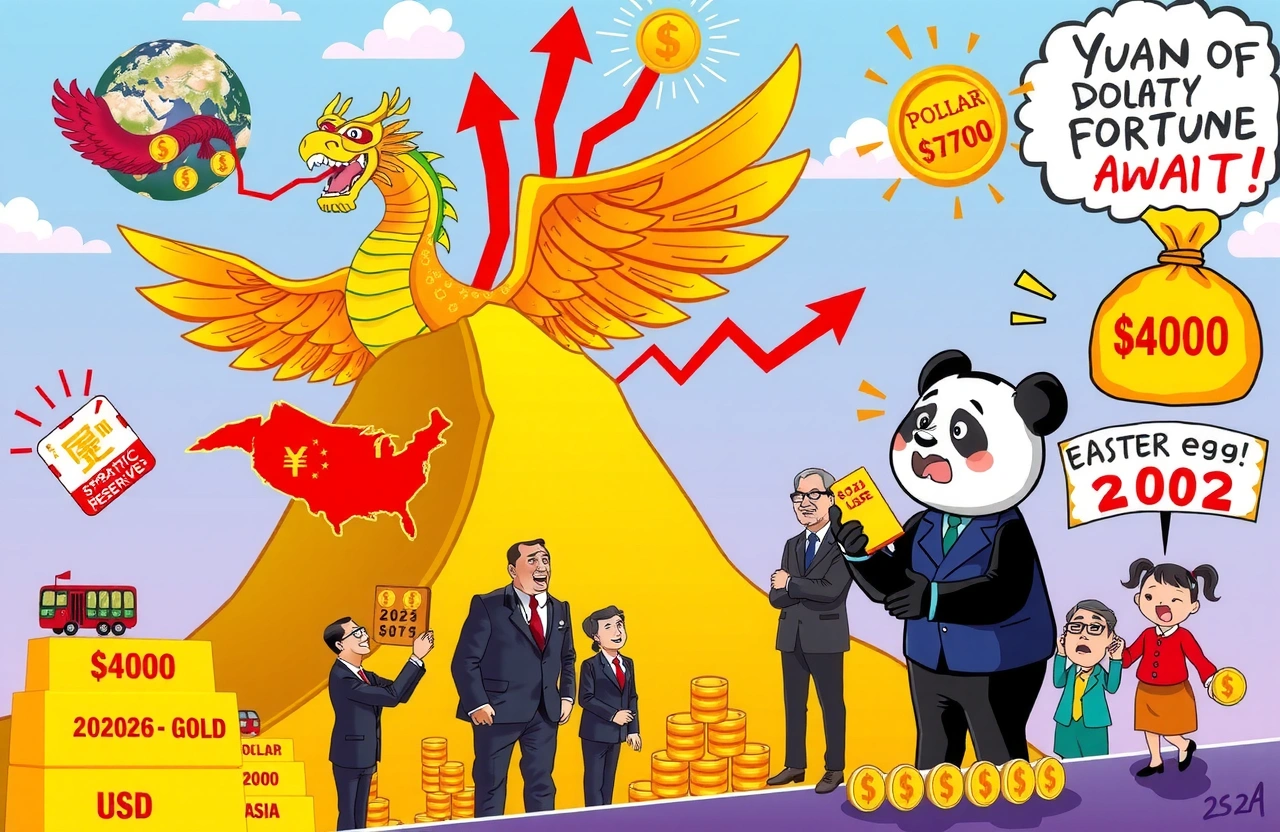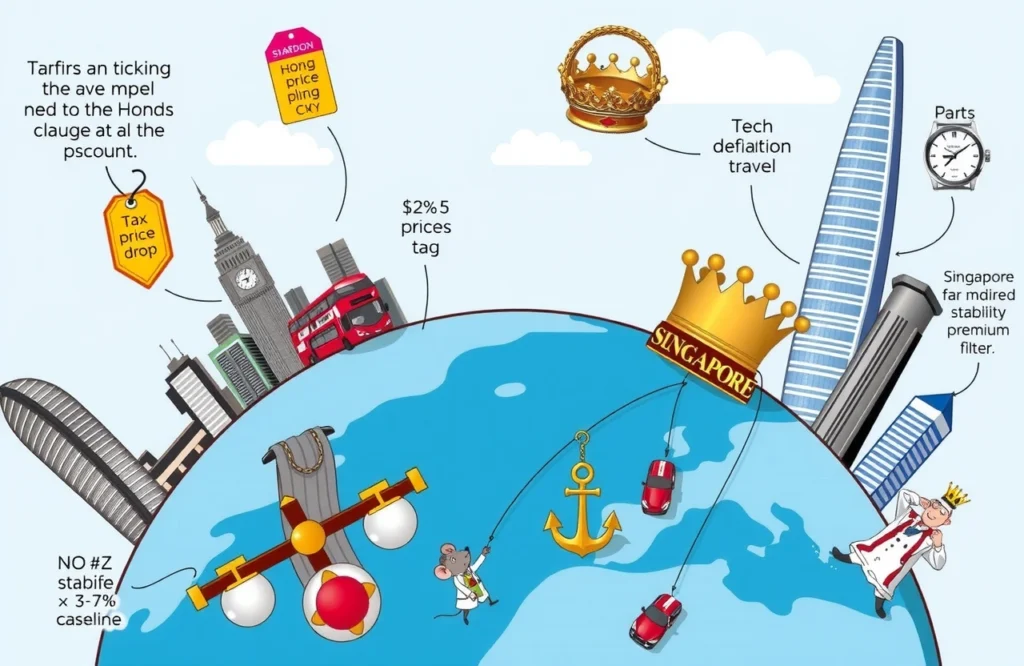Summary
– Goldman Sachs forecasts gold prices reaching $3700/oz by end-2025 and $4000 by mid-2026
– Global central banks purchased average 77 tons monthly through May 2025
– China leads official sector demand with 8 consecutive months of gold accumulation
– Reduced fund positioning creates space for structural ETF and central bank inflows
– Long-term long gold remains Goldman Sachs’ recommended investment stance
The Golden Surge: Central Banks Fuel Historic Rally
Financial markets received a seismic jolt when Goldman Sachs analysts unveiled projections anticipating gold prices could skyrocket to unprecedented levels. In their landmark July 13 research report, the investment banking powerhouse forecasts gold reaching $3700 per ounce by December 2025 before climbing to $4000 by mid-2026 – a staggering 30% upside from current valuations. This bullish outlook stems from robust institutional buying patterns demonstrating no signs of slowing. Global central banks accumulated approximately 77 tons monthly between January and May 2025, confirming gold’s status as a strategic reserve asset during geopolitical uncertainty.
Anatomy of Central Bank Demand
The scale of official sector purchases reveals profound shifts in global reserve management strategies. Though May’s 31 tons of net global purchases (excluding U.S. activity) represented a moderate cooldown from peak volumes, it still dwarfs historical averages. China emerged as the dominant buyer within detectable reserves, adding 15 tons during the month as part of its systematic diversification away from dollar-denominated assets. By end-June, the People’s Bank of China reported holdings of 73.9 million ounces – marking the eighth consecutive monthly increase with 70,000 ounces added in June alone. This acceleration reflects deepening concerns about currency stability and trade fragmentation.
Beyond the Numbers: Strategic Implications
Goldman emphasizes these figures aren’t isolated events but components of a sustained structural trend reshaping gold markets. Central bank acquisition programs typically operate on multi-year timelines and signal confidence in gold’s inflation-hedging properties. Recent transactions coincide with expanding BRICS currency initiatives and Asia’s reduced Treasury purchases. Such patterns support the thesis for gold price reaching $4000 even if monthly purchase volumes slightly trail Goldman’s original 80-ton forecast. The narrowing yield gap between gold and interest-bearing assets further enhances bullion’s appeal for reserve managers rebuilding portfolios post-pandemic.
China’s Accelerated Gold Accumulation Strategy
Beijing’s calculated gold strategy merits particular attention in the journey toward $4000 markets. China’s approach combines policy pragmatism with financial diplomacy, positioning yuan reserves advantageously before potential U.S. election turmoil. As Western sanctions reshape global payment systems, gold’s neutrality delivers strategic optionality. The symbolism isn’t lost on markets – China’s 217 tons accumulated since late 2022 represents the most sustained accumulation since 2019.
Blueprints for Diversification
– Currency Independence: Reducing dollar exposure from record 67% of reserves in 2015 to 59% today through gold substitution
– Geopolitical Insurance: Physical holdings provide settlement alternatives if dollar access becomes contested
– Confidence Signaling: Demonstrating asset quality during domestic property market turbulence
– Yuan Backing: Gold reserves strengthen perceptions of renminbi stability during internationalization pushes
Investment Flows and Gold Market Dynamics
Goldman identifies an important technical transition occurring among institutional players, potentially turbocharging gold’s ascent to $4000. Managed money positions in gold futures retreated significantly from April’s crowded peaks, alleviating concerns about overextension. This pullback created structural space for steadier institutional participants like exchange-traded funds to resume accumulation. The returning ETF demand amplifies gold-bullish sentiment beyond commodity traders to mainstream investors seeking inflation protection.
The ETF Renaissance
Fund flows provide critical momentum engines for materially higher valuations. Recent inflow patterns reveal:
– Physical gold ETF holdings increased 54 tons globally in Q2 2025 after four quarters of net redemptions
– North American funds led the reversal with $3.2 billion June inflows per World Gold Council
– European gold ETF assets under management grew 5.2% year-to-date despite rate uncertainty
– Asian funds saw record allocations among hyper-inflation economies like Turkey and Argentina
Such resurgent investment flips the script after two years of ETF liquidations that previously muted gold performance despite central bank consumption.
Goldman’s Roadmap to $4000 Gold
The mechanics behind Goldman’s $4000 gold forecast rest upon multiple converging tailwinds. Beyond central bank and ETF demand, real interest rate trajectories provide fundamental propulsion. Past cycles indicate gold outperforms during Fed easing phases regardless of recession outcomes. With markets anticipating policy relaxation by early 2026, gold appreciates inversely to opportunity costs. Unlike speculative crypto or tech assets, physical gold exhibits lower volatility during risk-off pivots – making Goldman’s long gold call particularly compelling as investment horizons extend.
Blue-Sky Valuation Frameworks
Evidence supporting the skyward journey toward gold price reaching $4000 appears in multiple analytical dimensions:
Historical Parallel Analysis
– The 2008-2011 rally saw gold climb 165% during Fed’s zero-rate experiment
– Current monetary policy moderation resembles 2019 pivot preceding 40% appreciation
Inflation-Adjusted Targets
– Gold’s 1980 high equals $2900 today after CPI adjustments
– $4000 projection represents just 60% of that peak in real terms
Portfolio Allocation Models
– Global pension funds currently hold <1% gold allocations vs. 2% institutional average
– Additional 1% allocation requires 15,000 tons equivalent to 4 years’ mining production
Risk Factors and Downside Scenarios
Reaching gold price targets requires navigating potential headwinds as well:
– Accelerated dollar strength dampening emerging market buying power
– Faster-than-anticipated decline in inflation reducing hedging urgency
– Unexpected central bank selling programs materializing
– Technological breakthroughs diminishing industrial applications
Goldman models suggest only sustained dollar appreciation above 115 on the DXY index meaningfully endangers the gold price reaching $4000 prediction.
Strategic Investment Applications
Positioning strategically for the coming price leap requires nuanced execution beyond simply buying bullion. Goldman emphasizes time horizon differentiation between its $3700 near-term target and the 2024 gold price projection. Shorter-term trades should emphasize futures curve positioning, while strategic allocation warrants physical exposure. Retail investors increasingly access physical holdings via fintech vaulting services offering fractional digital gold ownership without storage complexity.
Constructing Gold-Optimized Portfolios
– Moderate Gain Profile: 5-7% physical gold allocation offsets equity volatility decay
– Aggressive Upside Capture: 10-15% allocation mining stocks with blue-sky exploration potential
– Risk-Managed Approach: Gold producer call options with December 2026 expiry
– Yield Enhancement: Royalty companies providing gold-price leveraged dividends
The Path Forward
The convergence of monetary policy shifts, central bank accumulation and reemerging investment demand establishes gold’s runway toward historically significant thresholds. China’s coordinated reserve diversification underscores how structural rather than transient forces propel this bull market. While price volatility remains inevitable in the journey toward $4000 gold, Goldman affirms enduring commitment to their long gold recommendation.
Market participants should consider:
– Calculating appropriate portfolio weightings reflecting risk tolerance
– Exploring tandem positions in yuan assets benefiting from currency reinforcement
– Scheduling accumulation strategies before speculative positioning reignites
All eyes now turn to monthly reserve disclosures and Fed signals for confirmation that gold price reaching $4000 evolves from projection to reality. The brick-by-brick foundation laid through disciplined institutional accumulation suggests these targets remain fundamentally supported rather than speculative pipe dreams.




